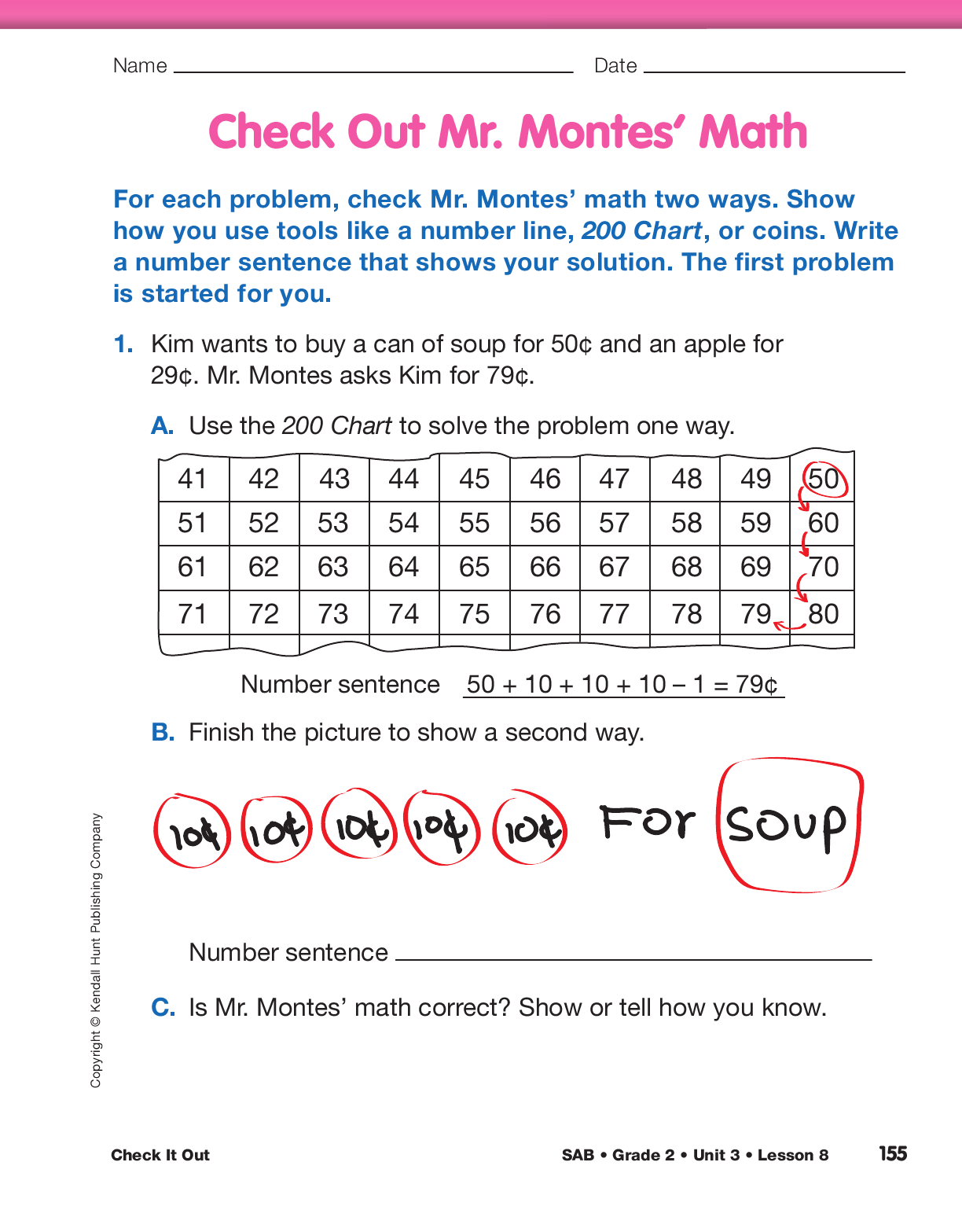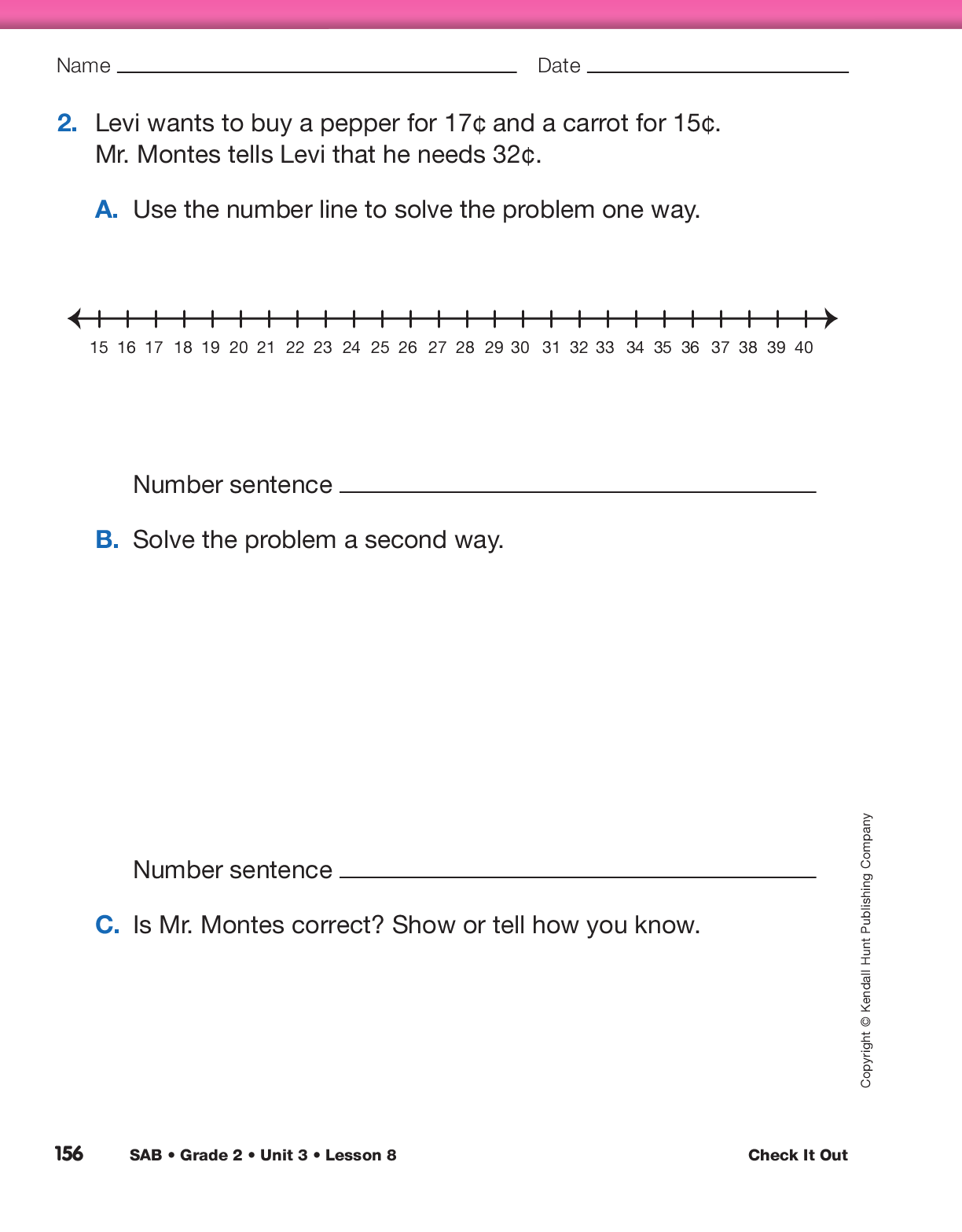Check It Out
Est. Class Sessions: 2Developing the Lesson
Part 2: Solving Problems Two Ways to Check for Reasonableness
Check Out Mr. Montes’ Math. Tell students that they will now solve some other problems that students found in Mr. Montes’ grocery store. Students should have number lines, 200 Charts, connecting cubes, and coins available to solve these problems. Students should work with partners to solve the problems.
Start by reading Kim’s problem in Question 1 of the Check Out Mr. Montes’ Math pages in the Student Activity Book.
Kim solved the problem two ways. Ask students to look at how Kim used the 200 Chart to solve 50 + 29.
Ask:
Kim also started to solve the problem a second way. Ask students to finish Kim’s picture to solve the problem.
Ask:
Have students work in pairs to solve the other problems on the Check Out Mr. Montes’ Math pages. As you circulate, ask students to show how they are using the tools and strategies. Encourage students to show their strategy in the number sentence, like Kim. See the Sample Dialog for a sample discussion of Question 3.
Self-Assess with Math Practices Checklist. Assign the Two Solutions page in the Student Activity Book to assess students’ abilities to solve a problem in more than one way. Have desk number lines, 200 Charts, coins, and connecting cubes readily available. Display and direct students to the Math Practices page in the Student Activity Book Reference section to review the following Expectations:
- MPE2: Find a strategy. I choose good tools and an efficient strategy for solving the problem.
- MPE3. Check for reasonableness. I look back at my solution to see if my answer makes sense. If it does not, I try again.
- MPE6. Use labels. I use labels to show what
numbers mean.
Explain to students that solving the problem two ways helps them check the reasonableness of their solutions. Emphasize that both ways should have the same answer and if not, they should go back and check their solutions.

















